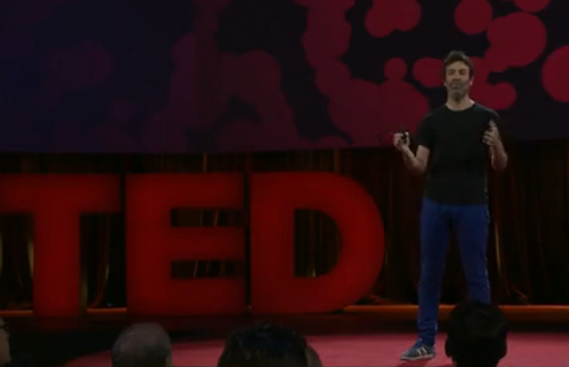And it turned out to be that for this group of 34 people,
結果顯示,剛剛的34位年輕人,
the algorithm based on semantic coherence could predict,
透過這個語義連貫性算法,
with 100 percent accuracy, who developed psychosis and who will not.
預測誰會精神錯亂的正確率達到百分之百。
And this was something that could not be achieved not even close
目前臨床上所有測量方式都無法達到、
with all the other existing clinical measures.
或接近這個數字。
And I remember vividly, while I was working on this,
在我做這項研究的時候,清楚地記得一件事,
I was sitting at my computer and I saw a bunch of tweets by Polo
當時我坐在計算機前面,看到保羅傳了一堆信息給我,
Polo had been my first student back in Buenos Aires,
他是之前我回到布宜諾斯艾利斯的第一個學生
and at the time he was living in New York.
當時他住在紐約。

And there was something in this tweets
我發現訊息不太對勁
I could not tell exactly what because nothing was said explicitly
雖然我講不出個所以然來,因為他寫得不清不楚
but I got this strong hunch, this strong intuition, that something was going wrong.
但我有一個強烈的直覺,一定是出事了。
So I picked up the phone, and I called Polo, and in fact he was not feeling well.
所以,我打電話給保羅,沒錯,他當時感覺不太舒服。
And this simple fact, that reading in between the lines,
用這樣一個單純的辨認方式,從他的字里行間,
I could sense, through words, his feelings, was a simple, but very effective way to help.
我可以隱約感受到他的感覺,并在第一時間有效地幫助他。
What I tell you today is that we're getting close to understanding
今天我要告訴各位的是,我們已經越來越能理解
how we can convert this intuition that we all have, that we all share, into an algorithm.
如何把我們共有的直覺轉換成算法。
And in doing so, we may be seeing in the future a very different form of mental health,
經由這樣做,未來我們也許可以看到一種全然不同的心理健康模式,
based on objective, quantitative and automated analysis of the words we write, of the words we say.
而且是基于一種客觀、量化的方式來自動分析出我們所寫的字、我們所說的話。
Gracias.
謝謝。











